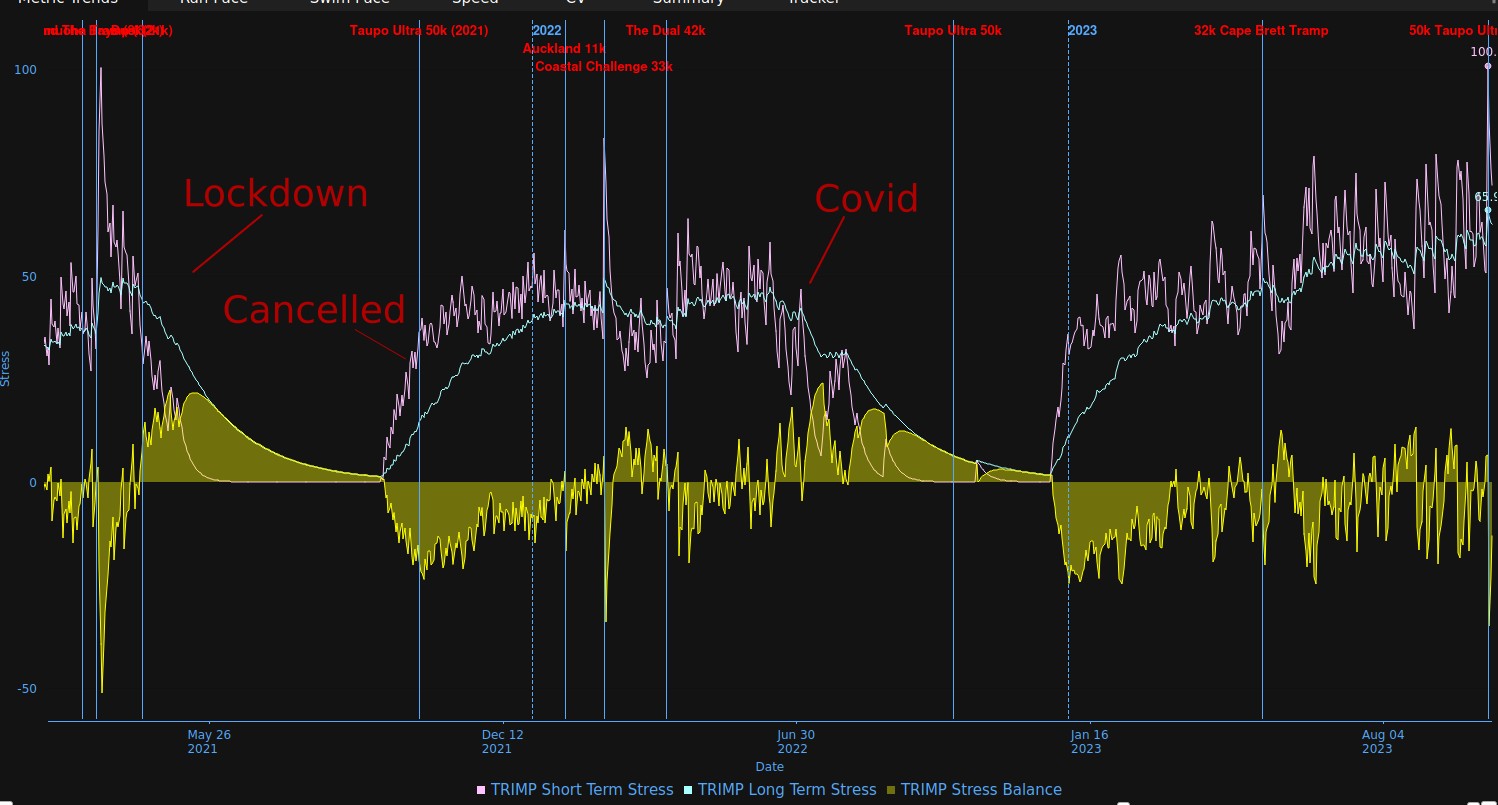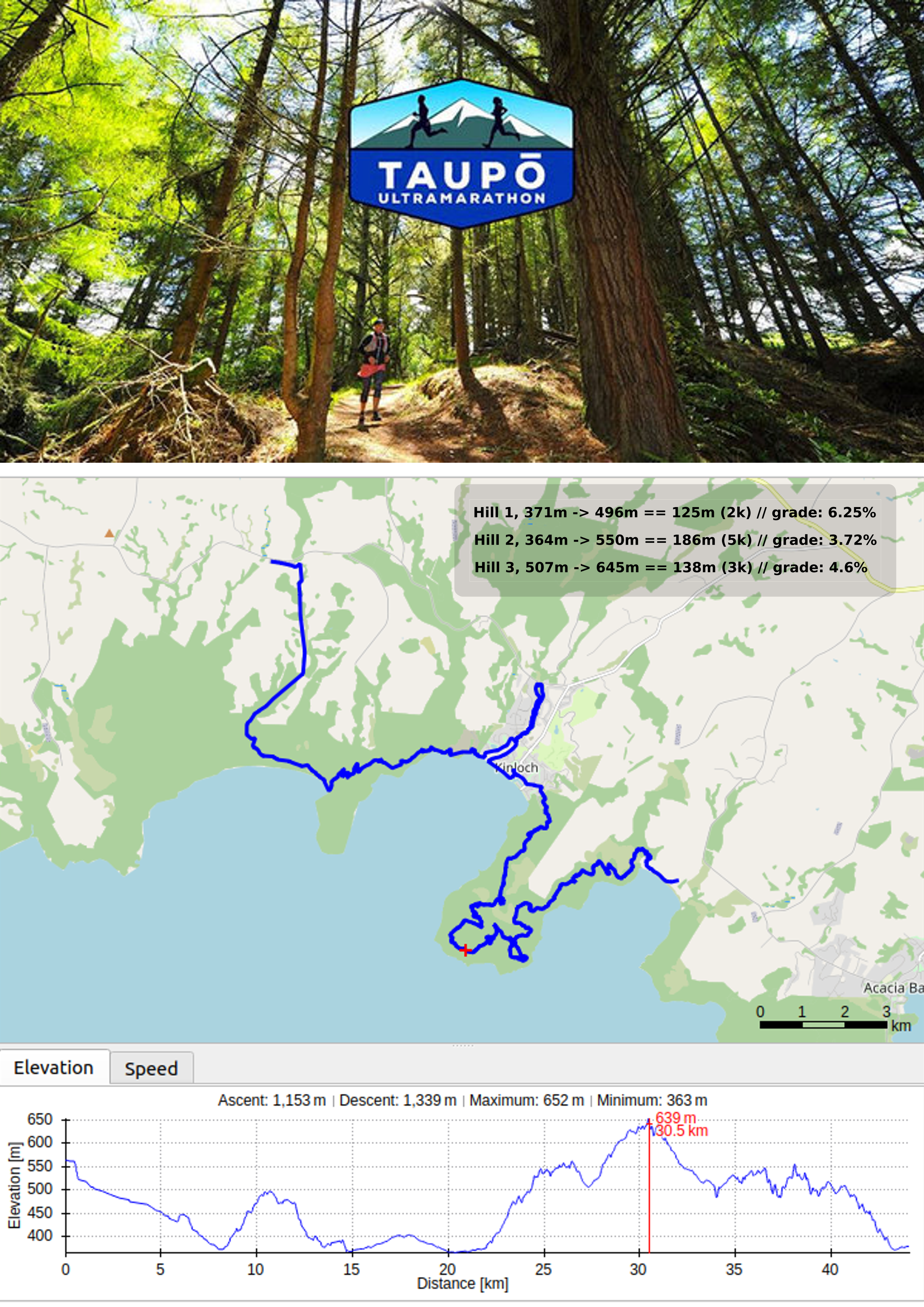50k Ultramarathon Retrospective
I love trail running. I love to hike and tramp; to be in the middle of nowhere with almost no one around. Just me and the planet. Running in the woods is just… it’s just perfect.
I’ve done several smaller trail runs (33k, 24k, and my original love the GutBuster in the Blue Mountains Australia), but I hadn’t broken into the Ultramarathon distance officially until last weekend.
The Taupō Ultramarathon - I’ve been trying to do this race for about 3 years now. In 2021 New Zealand went into lock down, and most everything stopped. The race that year was cancelled - which made sense. The next year I was the lucky recipient of Covid in the middle of my restarted training - so I had to DNS/DNF. But finally… finally the spike proteins aligned, and I was able to show up to the start line.

There are many who are far better than I am, have accomplished more and gone further and faster than I ever will; however, this was a bit of a win for me because ever since I got covid, I haven’t been right. While I was “only sick for a few days”, my fitness has never recovered. And not for lack of trying. I haven’t been able to get my fitness back to where it used to be. For example, I used to run a half marathon in ~1:35, and now I am lucky if I can pull off ~2:30. This isn’t just being out of shape either (I know what that feels like), this is something different. I wont bore you with the details, but I was fearful I wouldn’t even be able to get enough fitness to even finish.
So, this is just a bit of a celebratory post for me. I also hope you find some solace in this if you’re also “missing a few gears after covid”. Mostly though this is a write up about what worked and what didn’t so I can fine tune things for the next race.
If you are curious, my finish time wasn’t fantastic. However, I came in 8th in my age group, and seeing that my goal was just to finish, I am happy with that result.
Fitness Research
I used several resource when devising my training plan and sorting the gear I would need. Here are a few of the books I found helpful:
- Hal Koerner’s Field Guide to Ultrarunning
- Faster After 50: How to Race Strong for the Rest of Your Life
- Running Your First Ultra - Krissy Moehl
- No Meat Athlete 50k Training Plan
I found so much useful information in those books. To highlight some of the obscure information you can learn from these: Gaviscon antacid tablets have all the right ingredients to help alleviate calf cramps in an emergency - and it totally works! Who would have known? Ah, books with their pompous information we should definitely get rid of them 🙃.
And at the start of the training, before I started ramping up the running, I was doing some weight lifting to try to fix some balance issues and strengthen my core:
Race Research
I think this went well for me, and highly recommend doing this.
I researched the race quite a bit; specifically the amount of elevation gain, when they happened, and how nasty they were. I then made a poster of the data and hung it on my wall:

Using the information from the research, I made sure that most of my long runs leading up to the race were close to the level of elevation gain. While the training runs were not on trails, I think doing the hill work helped a lot. Granted, it could have been much better, but I credit this with the lack of cramping during the race.
The poster helped me know exactly when things were about to get hilly.
If I had easier access to trails, doing more actual trail runs would have been helpful. Even more hill work would have helped. I did a number of interval sessions, and I probably should have done more hill repeats instead.
Race Nutrition
I did the wrong thing according to what I’ve read, but it worked out ok. I only fuelled with Gu energy gels, and only drank electrolyte drinks (it’s got what plants crave). For some reason I wound up fuelling too infrequently which, from what I’ve read, is a very bad idea. I only consumed 4 Gus during the race, and drank two things of electrolyte drink.
4 Gus is equal to about 2,000 calories and the two drinks where about 300 calories. I burned around 3,000 calories in total during the race so I was a bit under (that’s 3,000 on top of the usual human need of 2,500 just to stay alive). In a 100k or 100 mile race under eating is a major red flag, can lead to bonking, and can get you disqualified. Not eating enough can be life threatening if you’re in the middle of a forest. I need to dial this in a bit better, and maybe change up my fuelling protocol.
Poles
During my training runs, I only got up to 38k. As a result I was very worried about the last 10k or so. Would I even be able to walk? As a precaution I had my hiking poles delivered to the last drop bag spot. I figured I could leave them if I felt good, and take them if I was nervous.
I should also mention: about 2:30 minutes into the race I tripped on a root and had a spill. I scraped up my arms, hands, and my knee. My knee took the brunt of it, and basically it just trickled blood the rest of the race (see photo at the end).
So nervous I was. I decided to take the poles for the last part of the race. As I was leaving the aid station a lady cheekily said “Oi, you don’t need those sticks!”. I should have listened to her as the poles were very cumbersome and made the last bit more difficult I think. I tried to stow them in my backpack, but since they were hiking poles not running poles they were just too big to do anything with. I actually considered just dropping them on the trail, but I couldn’t bring myself to do that - “Pack it in, pack it out. No exceptions.”
If you’re going to take poles, take quality lightweight poles and a quiver, or just don’t!
Gear in General
Aside from the poles, all my other gear worked wonderfully.

For the curious:
- GutBuster neck gaiter (always)
- Rotten Robbie Mesh Trucker Hat
- Brooks cascadia 17
- Macpac aluminium hiking poles (might as well carry dumbbells next time)
- Gus, Cliff bars, chocolate and Coca-cola - Shuga!
- Ultimate Direction ultra vest 3.0 by Scott Jurek 🤘
- Random Kmart workout shorts and t-shirt (long sleeve, tights, and beanie inside the pack)
- injinji toe socks - you can make fun of me, but I still don’t have any blisters.
- Foxelli Head torch
The colour coordination was not on purpose by the way - I am not that cool.
Fin
I guess pics or it didn’t happen time.
